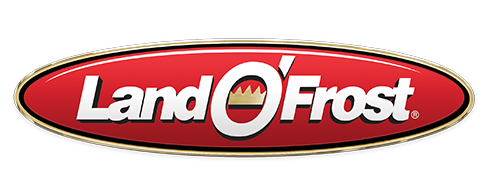How much fat should we include in our diets? This has remained a hot topic since the 1960s when Dr. Ancel Keys brought to light the potentially harmful health effects of saturated fats.
Then, in the ‘80s, several major reports were released vilifying diets high in fats, specifically animal fats. The result was a tsunami of new products with literally thousands of fat-free options for shoppers. This spurred more confusion about how much fat, if any, is best to consume and what types of fat are most beneficial to eat.
Good vs. Bad Fats
Yes, there are good fats. Fats are a necessary part of a healthy eating plan. They have many roles, such as helping your body absorb fat-soluble vitamins A, D, E and K while serving as essential building blocks for cells. They also improve the taste and texture of foods and provide a feeling of fullness.
While it’s important to include “good” fats in your diet, namely mono and polyunsaturated fats, it’s also important to remain aware of the “bad” fats, particularly saturated, and especially, trans fats.
Go Nuts for Good Fat
Generally, fats from plant foods have more desirable health profiles than animal fats. Mainly nuts and seeds like walnuts, almonds, sunflower seeds, chia seeds and flax seeds and their oils provide good fats.
Avocados and fish also contain high amounts of good fats, while fats from animals and processed foods contain high amounts of saturated and trans fats. Diets with moderate amounts of fats, up to 30-35 percent of total calories, coming from mostly good fats, are considered healthy.
Your Diet: Nutritious Fats to Eat
Now that you have a better understanding about fats, let’s look at some specifics.
Milk:
Milk contains saturated fat and, despite what you may hear on the news, full-fat dairy is linked to increased cholesterol and heart disease. Milk does have other nutritional benefits since it is rich in calcium and protein, but be sure to choose low-fat or fat-free options.
Yogurt:
Opt for plain, fat-free yogurt, and sweeten it with fresh or frozen fruit. Top it with healthy fats like walnuts to make it an extra-special treat. Fat-free sweetened yogurts often contain unnecessary fillers or thickening agents like carrageenan and gums that are best avoided. You can also blend plain, fat-free yogurt with almond butter and frozen fruit to create an easy and satisfying breakfast smoothie.
Cheese:
Many cheeses come in low-fat varieties. Look for light Brie and reduced-fat Gouda or cheddar instead of traditional full-fat options. But, when you can’t pass up Gruyere, cotija or feta, just watch portion sizes and stick to one serving.
Eggs:
Remember the egg-white craze, again spurred from the fat-free 1980s? Well, it made people believe that cholesterol from foods was a no-no when actually it’s saturated fats and trans fats that have the largest impact on blood cholesterol. Instead of worrying about cholesterol in eggs, cut back on saturated fats and eliminate trans fats. Whole eggs offer almost every essential nutrient that humans need, with the exception of vitamin C, but should be eaten in moderation. The yolk is full of essential vitamins A, D, E and K, as well as lutein and zeaxanthin, both associated with reducing the risk of age-related macular degeneration. Plus, eggs contain choline, a compound linked to memory preservation.
Tip: Make small frittatas in
muffin tins with eggs, skim milk, veggies and low-fat or reduced-fat cheese.
Fish:
Fish also contain high levels of healthy fats. Salmon, mackerel, herring, lake trout, sardines and albacore tuna are especially good sources of omega-3 fatty acids, an essential fat of which many Americans do not consume enough. Include fish in your diet at least two times a week to increase your intake of omega-3 and healthy fats. Additionally, these fats are important for brain health and may help lower the risk of developing heart disease.
Tip: Make lunch wraps with canned salmon, lean turkey, chicken breast or ham, plus fresh veggies. Children might enjoy it on whole-grain flatbread or tortillas with low-fat mayo, romaine and shredded carrots.
Plant-Based Fats:
Generally, plant foods are also chock full of fiber, and the combination of fat and fiber leads to longer-lasting fullness, thus helping to prevent weight gain. Avocados, for example, are great in salsas, salads, mashed and used in place of mayonnaise and other condiments, added to omelets and used to top fish and other lean meats. Nuts and seeds work well in salads, homemade trail mix, pasta dishes, roasted vegetables or when also used to top fish and other lean meats. Also consider using ground nut meals as gluten-free alternatives to flour.
Tip: Kids love avocado boats! Cut an avocado in half, remove the pit, then use a red bell pepper as the sail. Give the kids a spoon to scoop and eat it plain.
As you can see, it’s time to let go of the fat-free myth and embrace healthy fats for their varied and valuable benefits. Always check the ingredients list on processed foods. Even if the nutrition label says no trans fat, there could be trace amounts. If hydrogenated or partially hydrogenated oils are ingredients, it’s best to avoid the food.
Additionally, low-fat and fat-free processed foods often have added sugars to make up for the flavor lost by removing the fat. So read and compare labels, and choose the brand with the best balance. Remember, healthy fats come with a variety of nutrients you need, and including them in your diets will lead to long-lasting satiety!



